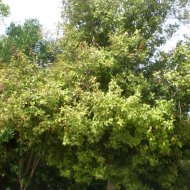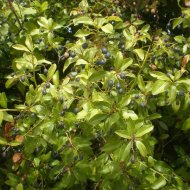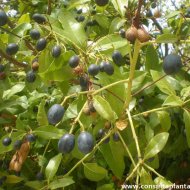Care of the tree Persea barbujana or Canary laurel |
|
The genus Persea, family Lauraceae, includes about 100 species of trees native to tropical regions of America, Asia and Macaronesia. Some species are: Persea barbujana, Persea americana, Persea schiedeana, Persea indica, Persea lingue, Persea japonica, Persea edulis, Persea caerulea. Common names: Canary laurel, Barbusano. Scientific synonyms: Laurus barbujana, Apollonias barbujana. This species is native to Madeira and the Canary Islands. They are large trees with a highly branched reddish trunk that reach 25 meters (82 feet) in height. The leathery, lanceolate leaves are glossy green; the young leaves are reddish. They produce abundant small greenish-white flowers. They bloom in late winter and spring. The fruits look like elongated olives and are purplish-black when ripe; the white seed is edible. Canary laurel is used as isolated specimens, in small groups and in alignments in public parks and large gardens. It's ideal for frost-free Mediterranean coastal gardens. Persea barbujana grows in exposures of full sun and light shade. It does not resist frost. The soil can be a normal garden soil with organic matter. Water regularly waiting for the substrate to have almost dried up; Apollonias barbujana resists a few days of drought. Fertilize with compost or manure in autumn. Canary laurel tolerates light pruning in autumn to maintain a compact habit, but it is not strictly necessary. Persea barbujana is a plant quite resistant to the usual pests and diseases. Laurus barbujana is propagated from seeds sown in spring or fall. |
Images of the tree Persea barbujana or Canary laurel |
Find plants
Persea barbujana or Canary laurel | Care and Growing
© 2025 FavThemes


